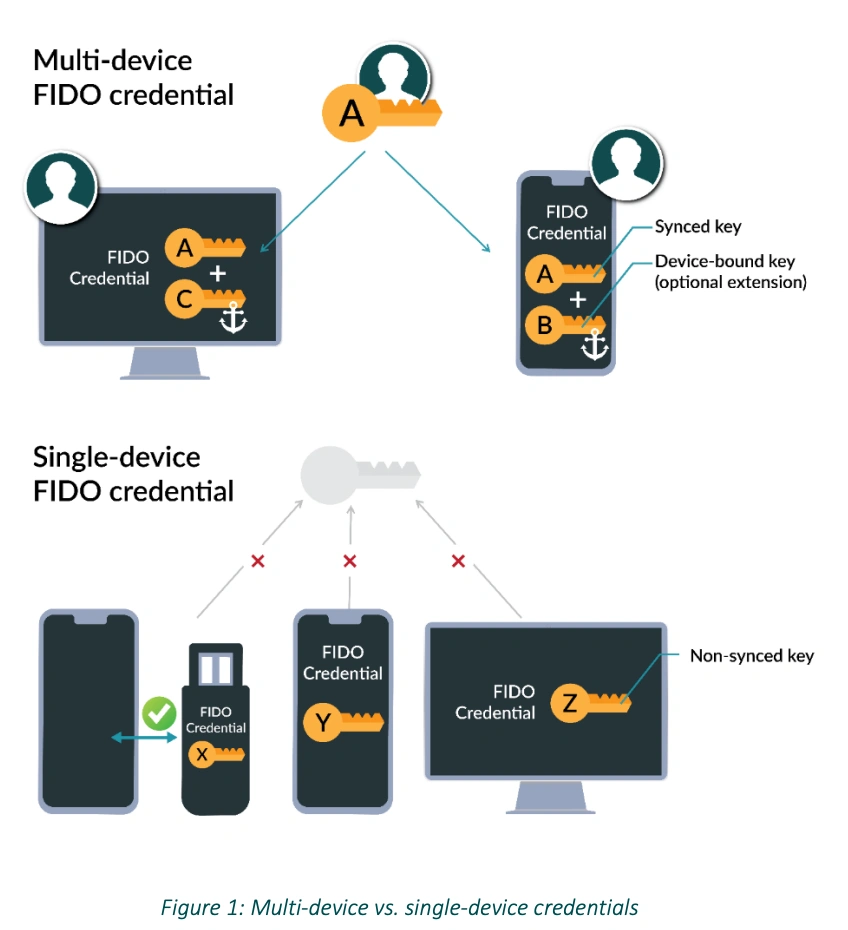What are passkeys, the technology that could kill passwords?
In 1961, MIT computer science professor Fernando Corbato invented the first digital password for a computer designed for research, perhaps without an inkling about the impact his invention would have on society. Fast forward to the 21st century and passwords have almost become synonymous with cybersecurity. However, this is not a positive thing when you look closer.
Despite the efforts to educate people about the importance of using stronger passwords over the years, the most common passwords remain “password” and “123456” revealing how vulnerable most people’s accounts are. Clearly, things aren’t working too well for this authentication method, so big tech has stepped up with a solution – passkeys. In this article, we explore what passkeys are, how you can enable them, and how they could eventually eliminate the need for passwords.
What are passkeys?
Passkeys are a type of security feature that allows users to access their online accounts without using passwords. They are built on the WebAuthentication or WebAuthn standard which uses public-key cryptography to better secure your accounts. Instead of typing a password, users can simply enter a passkey that is sent to their email or phone as a one-time code. This way, users can avoid the hassle of remembering and typing complex passwords, and also protect their accounts from hackers who might try to guess or steal their passwords.Passkeys can also be used in combination with other security methods, such as biometrics or PINs, to provide an extra layer of protection. They are becoming more popular among online services that want to offer a more convenient and secure way of logging in to their users.
How do passkeys work?
Passkeys work by using public-key cryptography, a technique that involves two related keys: a public key and a private key. The public key is stored on the web server, while the private key is stored on your device.
When you log in, the server sends a challenge to your device, which uses the private key to solve it and send back a response. The server then verifies the response with the public key, without needing to know the private key. This way, no secrets are exchanged or stored on the server, making passkeys more secure than passwords.
What do you need to get started with passkeys?
The good news is that most of the latest phones and PCs can use passkeys, thanks to the collaboration of major tech companies like Microsoft, Google and Apple. These companies have developed passkeys using the standards of FIDO Alliance and W3C.
If you have an iPhone running iOS 16+, iPad running iPadOS 16+ or Mac running macOS Ventura, you can use passkeys with TouchID or FaceID instead of a master password.
If you have an Android phone or tablet running Android 9+, you can use passkeys with Google Password Manager, which is a service that stores and syncs your passwords across your devices. If you have a Windows PC, you can use passkeys with Windows Hello. You can use passkeys on both Windows 10 and Windows 11, as long as you're logged in with your Microsoft account.
As for your web browser, you can use passkeys with Chrome, Edge, Safari or Firefox, as they all support this new technology. You just need to make sure that they’re updated to the latest version.
How to create and use passkeys
To create a passkey, you need to have an account with a provider that supports passkeys, such as Microsoft, Google, or Apple. Then, you need to sign in to the app or website that supports passkeys and enable the passkey option. Once you do that, you will have a passkey that is unique to your account and device.
More About : Passwordless login with passkeys





Comments
Post a Comment